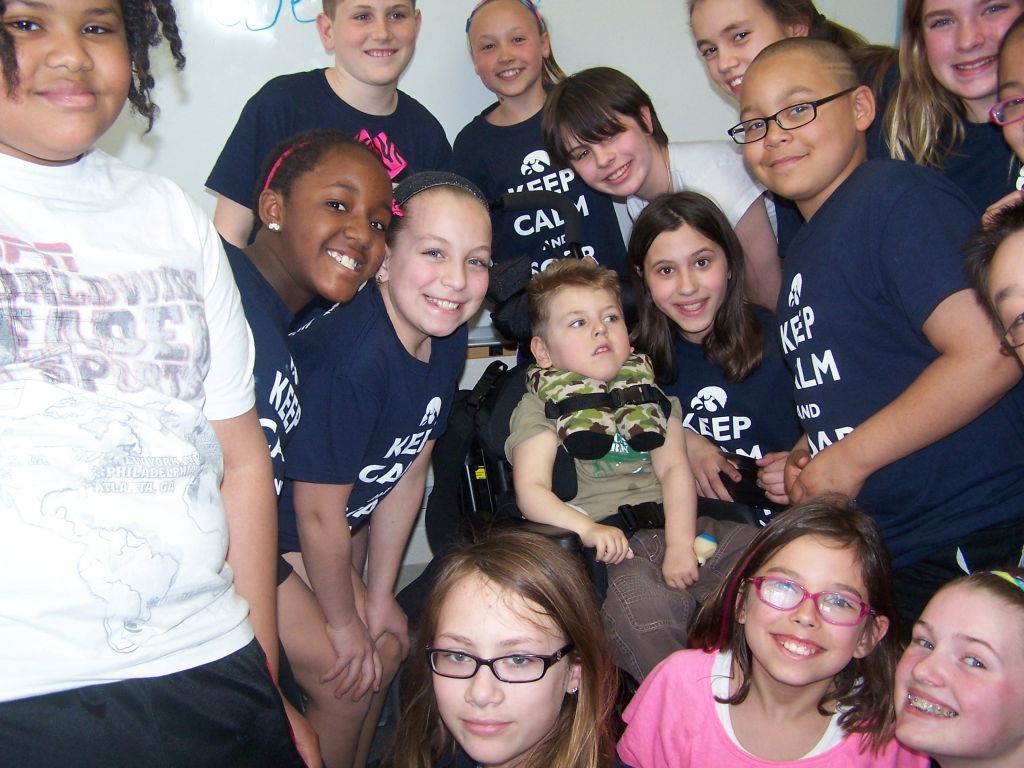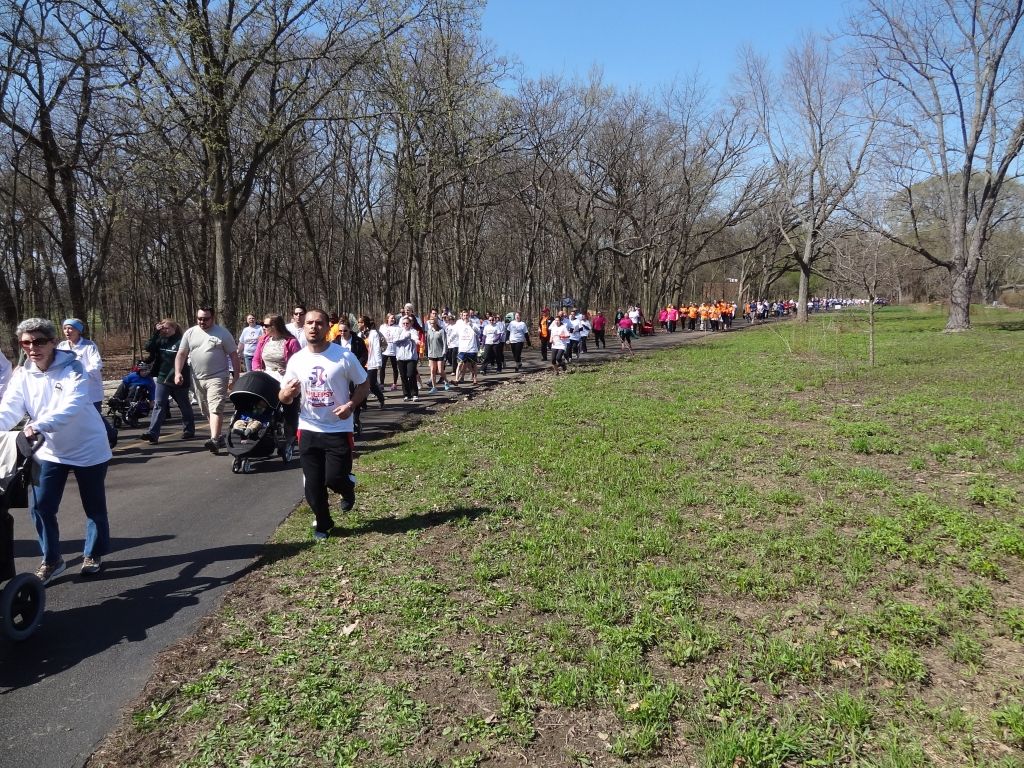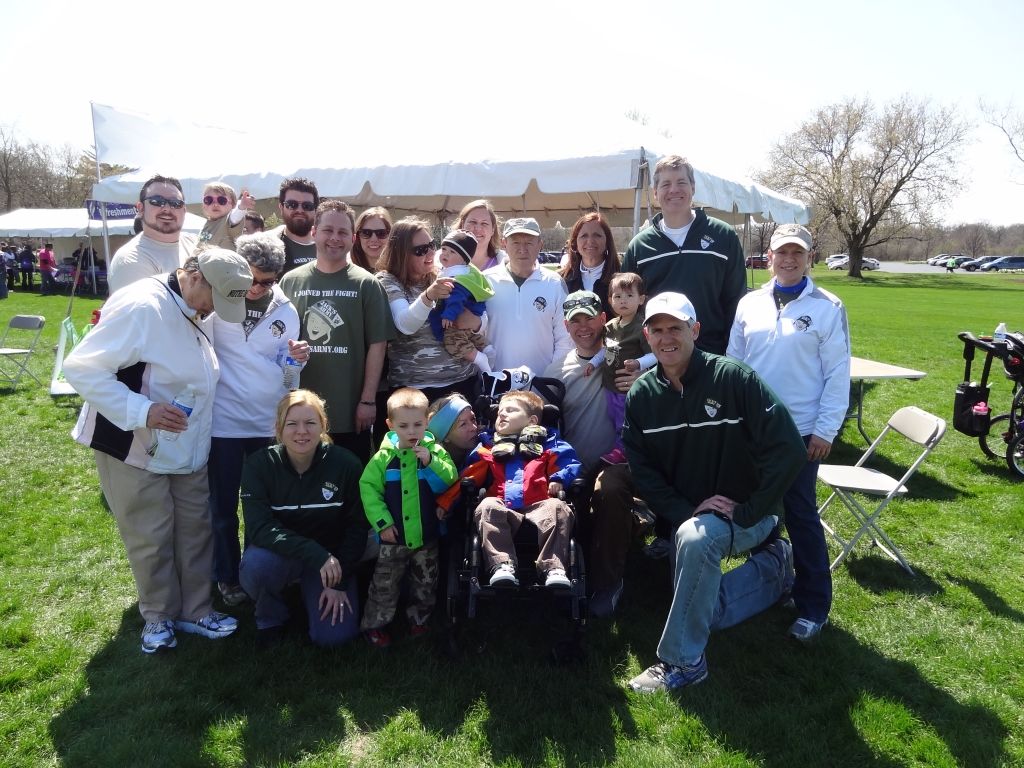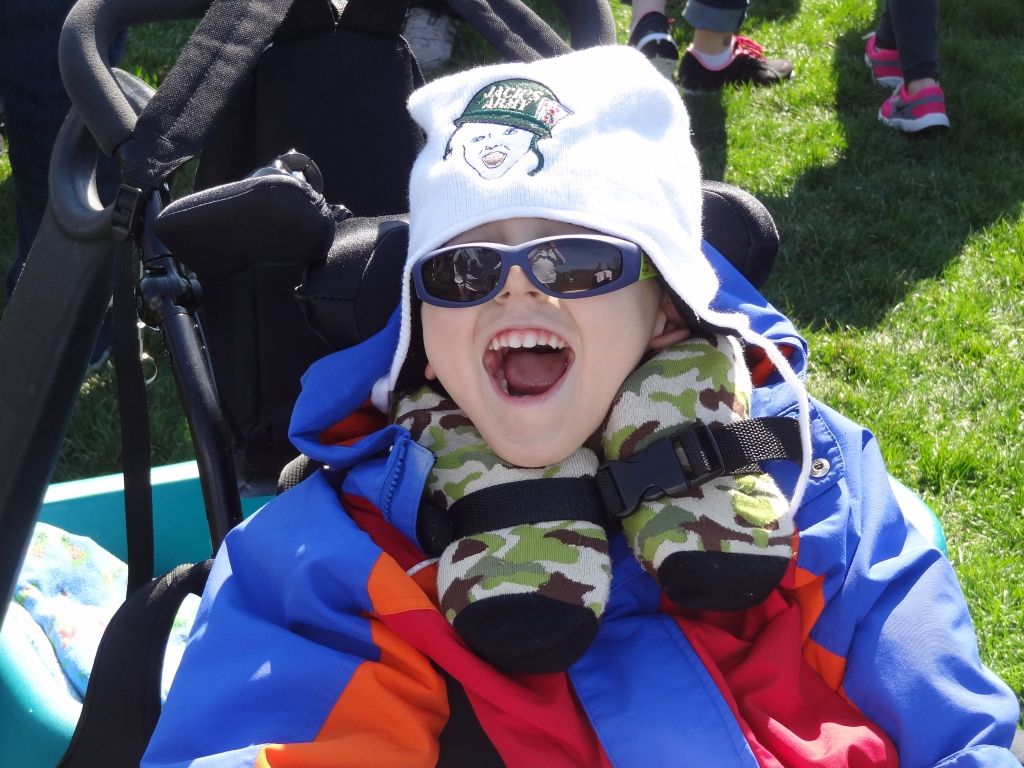- Details
- Written by Gina Vozenilek
- Category: News
- Hits: 4364
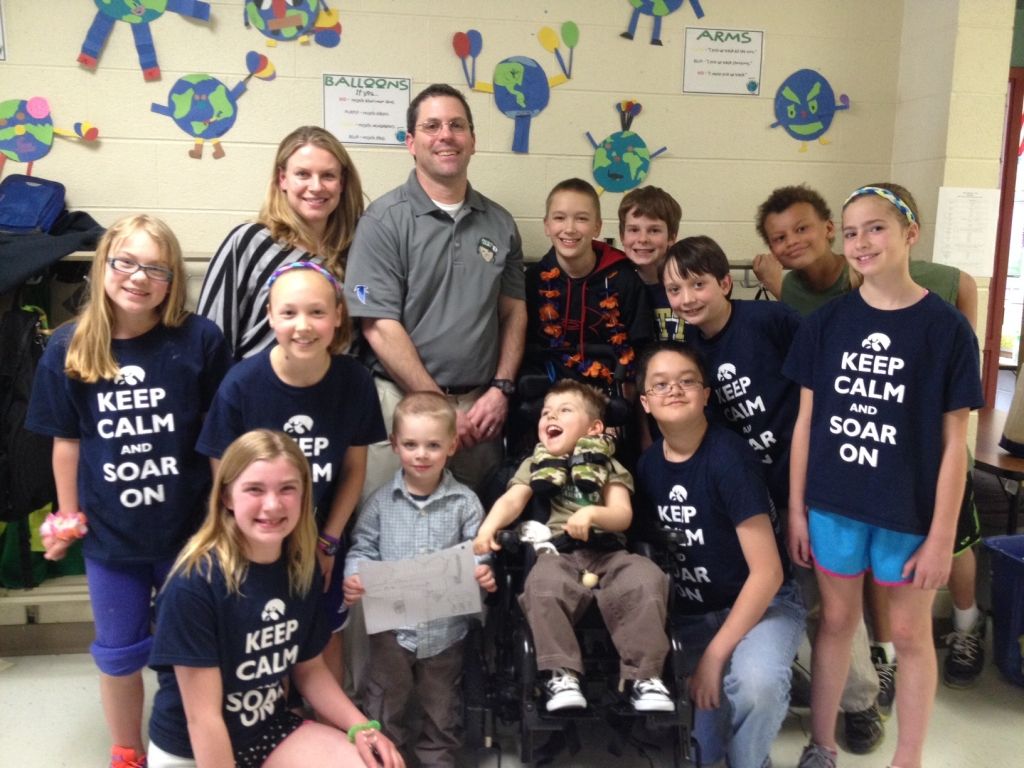
The 5th graders at Lowell Elementary School in Wheaton, Illinois, hosted Jack’s Army on Friday, April 11, 2014. They greeted Jack Pribaz, his kid brother Matt, and parents Mike and Liz with big smiles.
The visit gave students a chance to learn a little bit about KCNQ2-related epilepsy and how, even though it is a very uncommon disorder, lessons learned from studying this condition can help researchers understand the bigger picture about epilepsy and its causes.
The kids asked many good questions, most of them on much simpler topics: "What does he eat?" "Can he talk or play?" "What is his day like?" Their curiosity about Jack as a boy shows that at the heart of any support for a cause like Jack's Army lies compassion.
The students received magnets and t-shirts, and also learned about how through the foundation, the website, and social media, Jack’s Army has been able to help find and assist other kids around the world. They were amazed at the impact one little boy can have.
And they took that lesson to heart! The Lowell school community raised $700 for Jack’s Army!
Mike and Liz were blown away. Liz thanks Mrs. Denise Uthe for inviting them to Lowell. She says, "The 5th grade class and teachers really welcomed us with open arms and they were very determined to raise money for the foundation. They are an unbelievable group of kids and we are so happy that they picked the Jack Pribaz Foundation."
After the visit, their teacher had the students write about their experience of meeting Jack and his family. Some of their responses are posted at their school blog. We are touched and grateful for their support.
Mike Pribaz sends out his personal thanks: “This is another wonderful example of this community stepping up to help a family in need. It is so encouraging to see such energetic and caring kids taking part in such an important cause. We could never thank the Lowell family enough for all they have done for Jack and those who share his condition around the world.”
Mike and Liz and the boys look forward to revisiting Lowell on June 10 for a school assembly. They are eager to meet all the amazing students and staff who helped make the fundraiser such a success. See you again soon, Lowell!
- Details
- Written by Gina Vozenilek
- Category: News
- Hits: 3883
[caption id="attachment_436" align="aligncenter" width="504"]
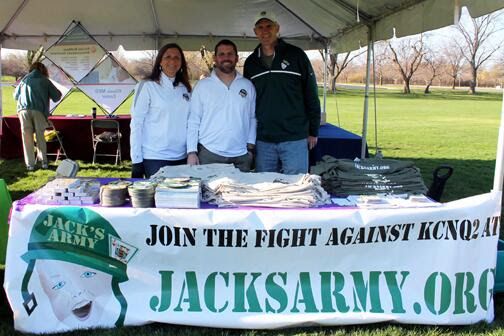 photo courtesy Epilepsy Foundation of Greater Chicago @EpilepsyChicago.[/caption]
photo courtesy Epilepsy Foundation of Greater Chicago @EpilepsyChicago.[/caption]Jack's Army marched on Wheaton, Illinois, on Saturday, April 26. The Epilepsy Foundation of Greater Chicago's annual 5K walk/run was held in our own backyard at beautiful Cantigny Park. The weather cooperated, the sun smiled on all the walkers, and it was a great day.
For the first time Jack's Army had a tent, which gave us the opportunity to pass out t-shirts, car magnets, and informational brochures. And, of course, it was great to get a chance to talk with people and tell them about KCNQ2-related epilepsy.
Many who stopped by were amazed at how quickly our organization has grown and how much impact we have made already. One family was eager to learn about KCNQ2 because their child had no diagnosis and had not been tested. It was great to be able to tell that family that there is now a rapid test available. Even just last year we would not have been able to offer that idea. Thanks, Dr. Cooper!
There is still much work to do to get the word out. Even within the epilepsy community in our own neighborhood, many people had not heard of Jack's Army or KCNQ2-related epilepsy. Having a booth at this big event was a great asset to our cause.
We value the partnership between Jack's Army and The Epilepsy Foundation of Greater Chicago. which hosted the annual fun-filled 5K run/walk. With 1200 people walking, they broke attendance records--up 25% from 2013.
Two more Chicagoland Epilepsy walks are yet to come: May 3 in Libertyville and May 10, the largest of the three, downtown at Montrose Harbor. Need more reasons or locations to participate? Click here.
- Details
- Written by Gina Vozenilek
- Category: News
- Hits: 4014
Recently a hot topic popped up over at the Facebook page for KCNQ2 parents and caregivers. What do you say to questions and comments about your child who has KCNQ2-related epilepsy? How do you react to well-intended but unwanted advice such as “have you tried juicing?” How do you respond to observations that can send you into an emotional tailspin, such as “but he looks so normal?” What kind of answer do you give to the person who asks, “How’s your daughter doing?”
The parents had a lively discussion about their different responses for these kinds of questions. Approaches varied, but it was pretty much unanimous that the parent’s prerogative to respond or not respond always trumps the curiosity of the person asking.
While its true that parents and caregivers generally appreciate those who express concern for their child and want to be courteous and accommodating, sometimes the moment is not right or they just don’t have the spare energy to get into a conversation. One wise mom pointed out that being polite is not as important as preserving your sanity.
Perhaps the one question that most consistently flummoxed the parents was this: When someone inquires about the nature your child’s condition, how much of the complicated science do you try to explain? Many parents remarked that even when they did their best to give a crash course in KCNQ2 101, the reaction was often disappointing. Some people ask but don't really want an answer, or aren't prepared for a lengthy neurology seminar.
So here’s a handy tool for parents and caregivers to use when faced with the how-much-science question. I’m calling it the 5-Finger K-C-N-Q-2 response.
Keep it simple until you know that the person wants more detailed information. Don’t be a boring professor, trapping your audience in a lecture they didn’t realize they were signing up for. Instead, have an easy answer at the ready, such as: “Jack has a form of epilepsy caused by a genetic mutation that also affects development and muscle control.”
Check the interest level. Pause and assess whether the person is really concentrating. You might be done already. If you are, smile and thank the person for asking. Is he or she genuinely still engaged? Great! Continue with:
“No one fully understands the condition yet--it’s so new.” It doesn’t even have a proper name! This is a useful comment because it says that your child is a pioneer. He or she is not someone to feel sorry for, but someone remarkable whose case is helping to define the emerging science. The answer is honest and leaves room for people to take away a positive impression.
Question. Is the conversation still alive and kicking? You can ask, “Do you want to know more about the science?” If the answer is yes, …
“2” the website! Direct the person to www.Jacksarmy.org. If he or she is truly curious, the website will help you do the heavy lifting. You can mention the recent trip to the research lab at Baylor, and that the media has recently taken an interest in KCNQ2-related epilepsy. There are some short news clip links on the website that tell the story. For those who want to get down to neurons and potassium channels, more detailed information is available, and we plan to add to our educational resources in the coming months. People who are genuinely motivated to understand your child’s condition can help spread the word, too. Some may even want to know how they can offer financial support. The website can help with all of those interests.
In the meantime, if you are a parent of a child with KCNQ2-related epilepsy, continue to share your questions and frustrations and helpful suggestions over on the Facebook page. Having a private support group of parents who really understand is an important resource for you as you move forward.

